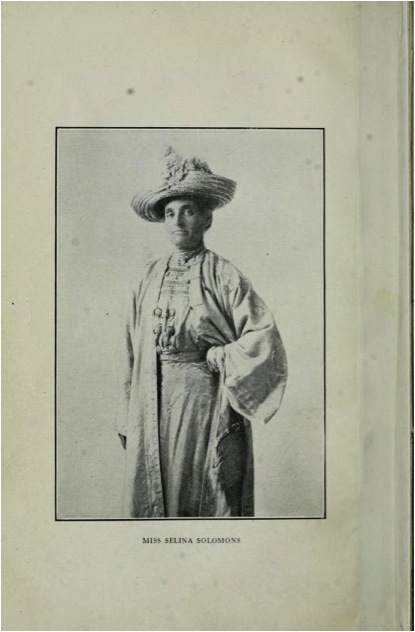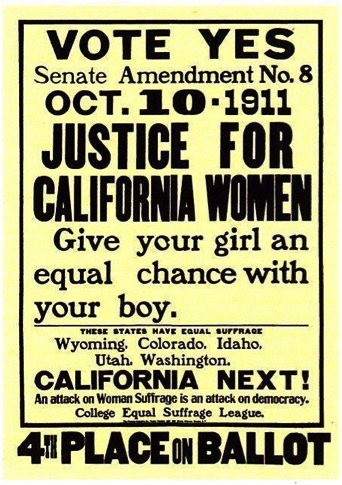Ordain Women is hosting a weeklong celebration of women’s history in recognition of this years theme, “Honoring our past, envisioning our future.” Each day this week we will be sharing a new post highlighting stories of women from all over the world, submitted by you. If you would like to share women’s history from your area, you can send your submission to: ordainmormonwomen@gmail.com. This post is one installment in this series.
“The shop girls who gathered for lunch at the Votes for Women Club on Sutter Street [in San Francisco] probably never imagined that a century later their state would be represented by two women senators,” wrote author Elaine Elinson in “Soup, Salad, Suffrage: How Women Won Their Right to Vote in California.” Elinson continued, “These possibilities, however, may not have been far from the dream of the club’s founder, Selina Solomons, a visionary suffragist who devoted her life to winning the vote for women.”
Solomons’s dream of women’s suffrage in California was realized in 1911, when “California passed Amendment 8, granting women the right to vote in state elections almost a decade before the 19th Amendment provided women’s suffrage throughout the United States.” Solomon’s organizing manual, How We Won the Vote in California: The True Story of the Campaign of 1911, is a firsthand account of the “lobbying, fundraising, precinct walking and arm-twisting efforts” that were needed “to convince a majority of male voters that they should share that right with women.”
An attempt to win the vote for California women in 1896 failed by 15 votes, despite the fact that nationally-recognized suffrage leaders Susan B. Anthony and Dr. Anna Howard Shaw campaigned throughout the state and, Solomons noted, won “thousands for the cause.” However, she added, “the masses of the people in the cities were in a state of deadly apathy.” Too, Elinson wrote, “class divisions within the women’s movement–between the trade union women and the middle class reformers–often seemed irreconcilable.” The movement needed the support of both the Protestant elite and the “shop girls and clerks.”
Solomons, the daughter of middle-class Jews who had suffered an economic reversal, understood this. She decided to open “the Votes for Women Club in a loft near Union Square. The club, festooned with suffrage-yellow paper flowers and banners, was aimed at working women. Equipped with a kitchenette, it provided nutritious dishes for a nickel each.” Solomons hoped that the shop girls who came to eat would stay and read the suffragist literature and attend the club’s lectures and performances advocating the vote for women. They did, and Solomons enlisted their help in canvassing the poor, working-class and immigrant neighborhoods.
During the week leading up to the election, Solomons recorded, “Open-air meetings were begun rather timidly at first, but soon all caught the fire … and working women, college women, club women and home women alike were speaking from automobiles, and even soap boxes, ‘to the man in the street.’” When Election Day came, wrote Elinson, “the Votes for Women Club went on the lookout for fraudulent ballots and helped mobilize more than 1,000 poll watchers.” Though the “vote was so close that early editions of both The Chronicle and Examiner declared suffrage had lost,” statewide, it narrowly passed. “October 10, 1911 proved to be the greatest day in my life,” Solomons proclaimed.
Reflecting on the day she officially registered to vote, Solomons wrote, “Was it a dream? Some of us rubbed our eyes, remembering that time, only one short year and a half ago, when our little band of insurgent women besieged the registration office with a pseudo-serious demand to be registered. This time the placard ‘all citizens must register’ would have stated a fact! This time our request was not refused!”
Like women’s suffrage, where gender equity exists, it was not a gift. It was won by persuasion, long-suffering and countless “little band[s] of insurgent women.”
This post was submitted by Lorie Winder Stromberg who is on the Ordain Women Executive Board and lives in California.








